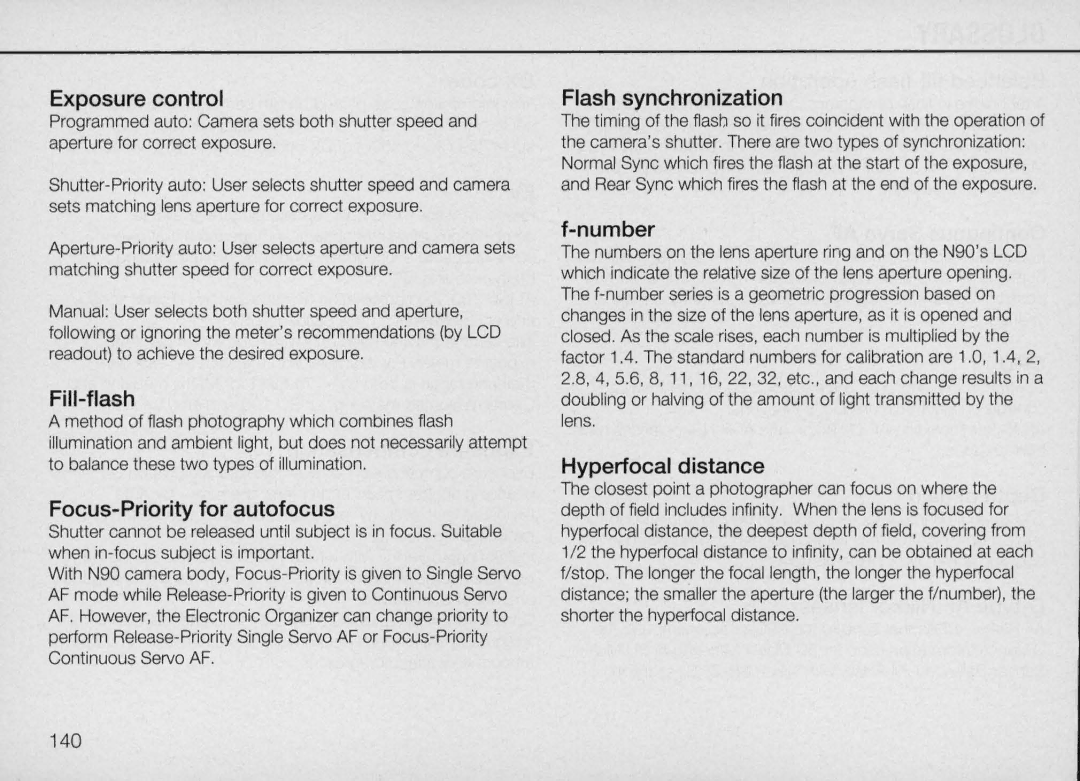
Exposure control
Programmed auto: Camera sets both shutter speed and aperture for correct exposure.
Manual: User selects both shutter speed and aperture, following or ignoring the meter'srecommendations (by LCD readout) to achieve the desired exposure.
Fill-flash
A method of flash photography which combines flash illumination and ambient light, but does not necessarily attempt to balance these two types of illumination.
Focus-Priority for autofocus
Shutter cannot be released until subject is in focus. Suitable when
With N90 camera body,
Flash synchronization
The timing of the flash so it fires coincident with the operation of the camera'sshutter. There are two types of synchronization: Normal Sync which fires the flash at the start of the exposure, and Rear Sync which fires the flash at the end of the exposure.
f-number
The numbers on the lens aperture ring and on the N90'sLCD which indicate the relative size of the lens aperture opening . The
Hyperfocal distance
The closest point a photographer can focus on where the depth of field includes infinity. When the lens is focused for hyperfocal distance, the deepest depth of field, covering from 1/2 the hyperfocal distance to infinity, can be obtained at each f/stop. The longer the focal length, the longer the hyperfocal distance; the smaller the aperture (the larger the f/number), the shorter the hyperfocal distance.
140
